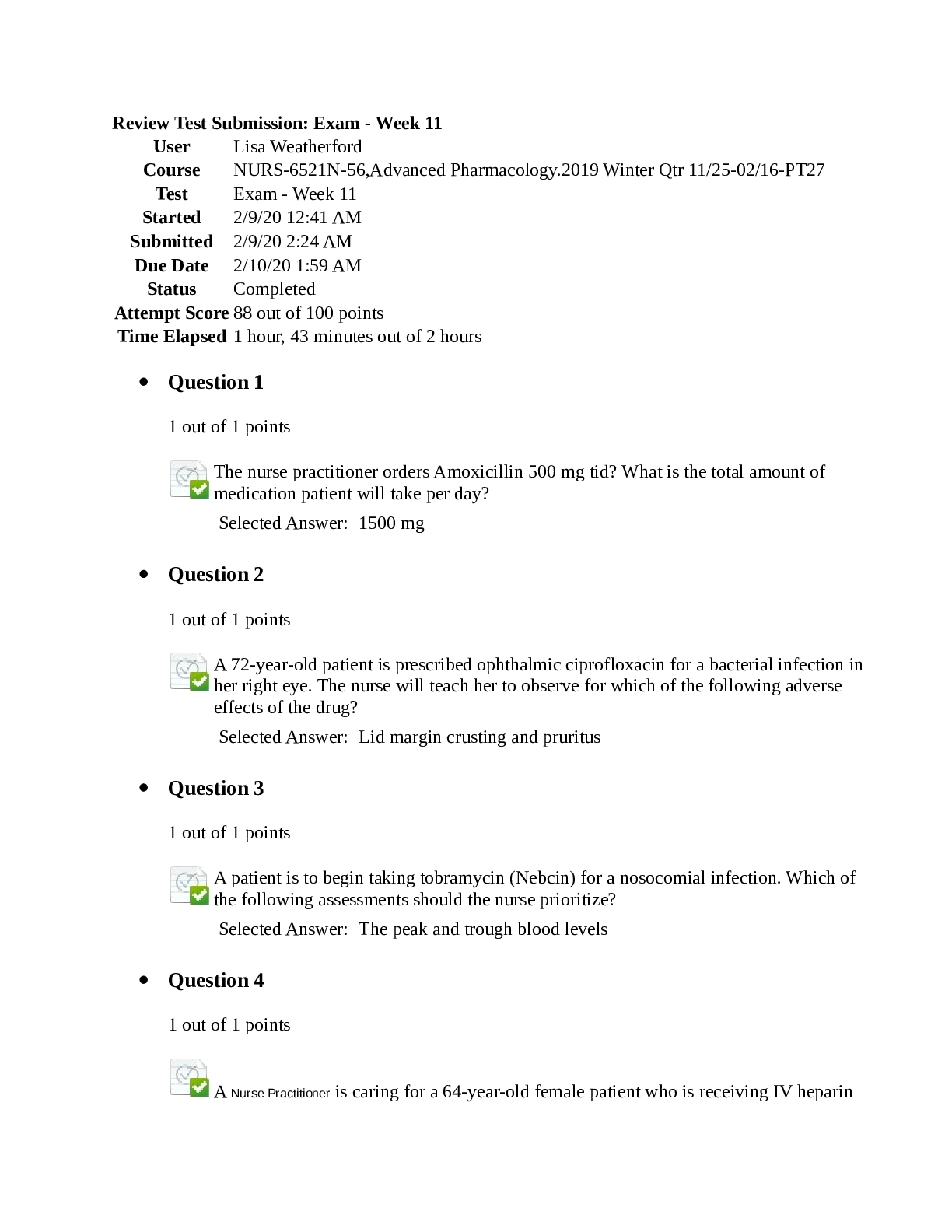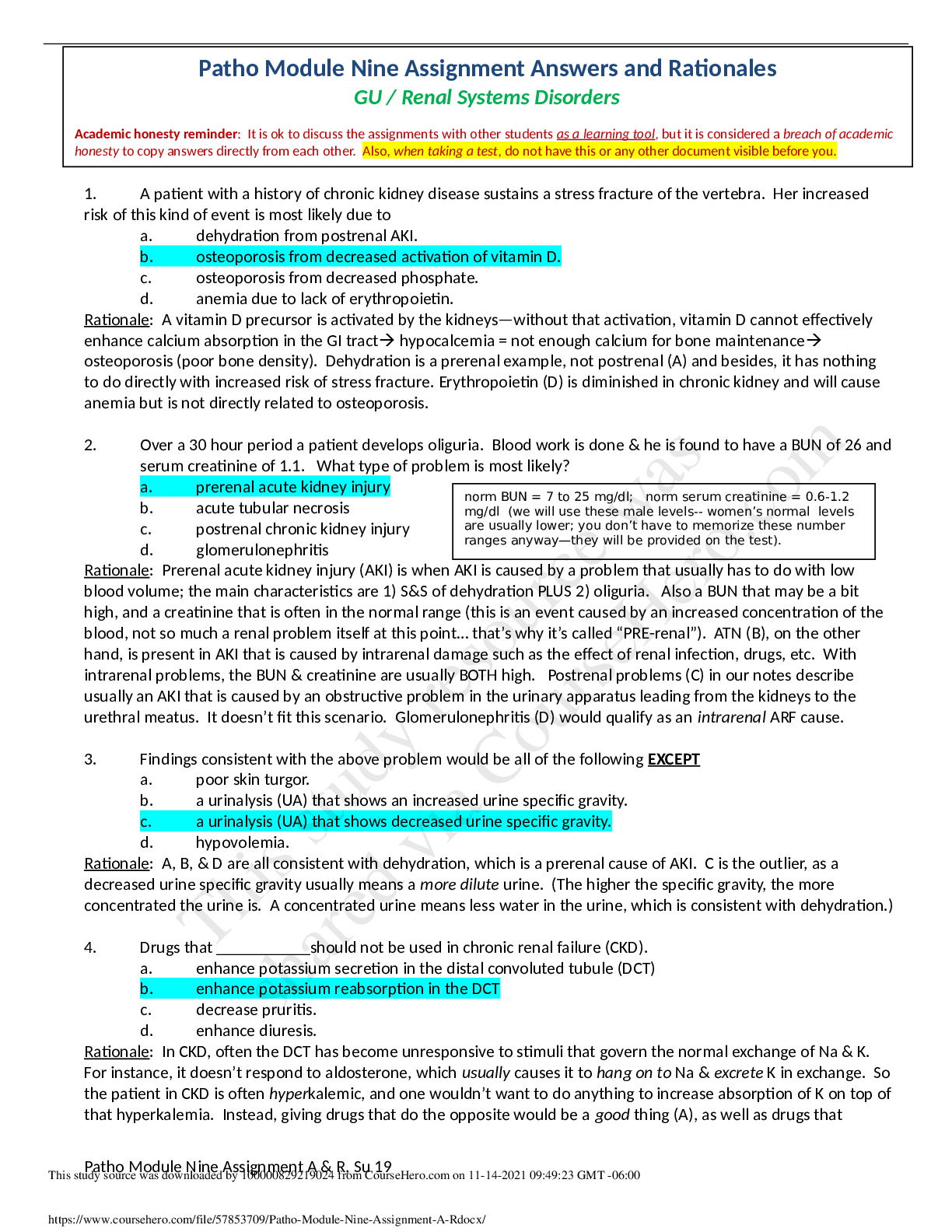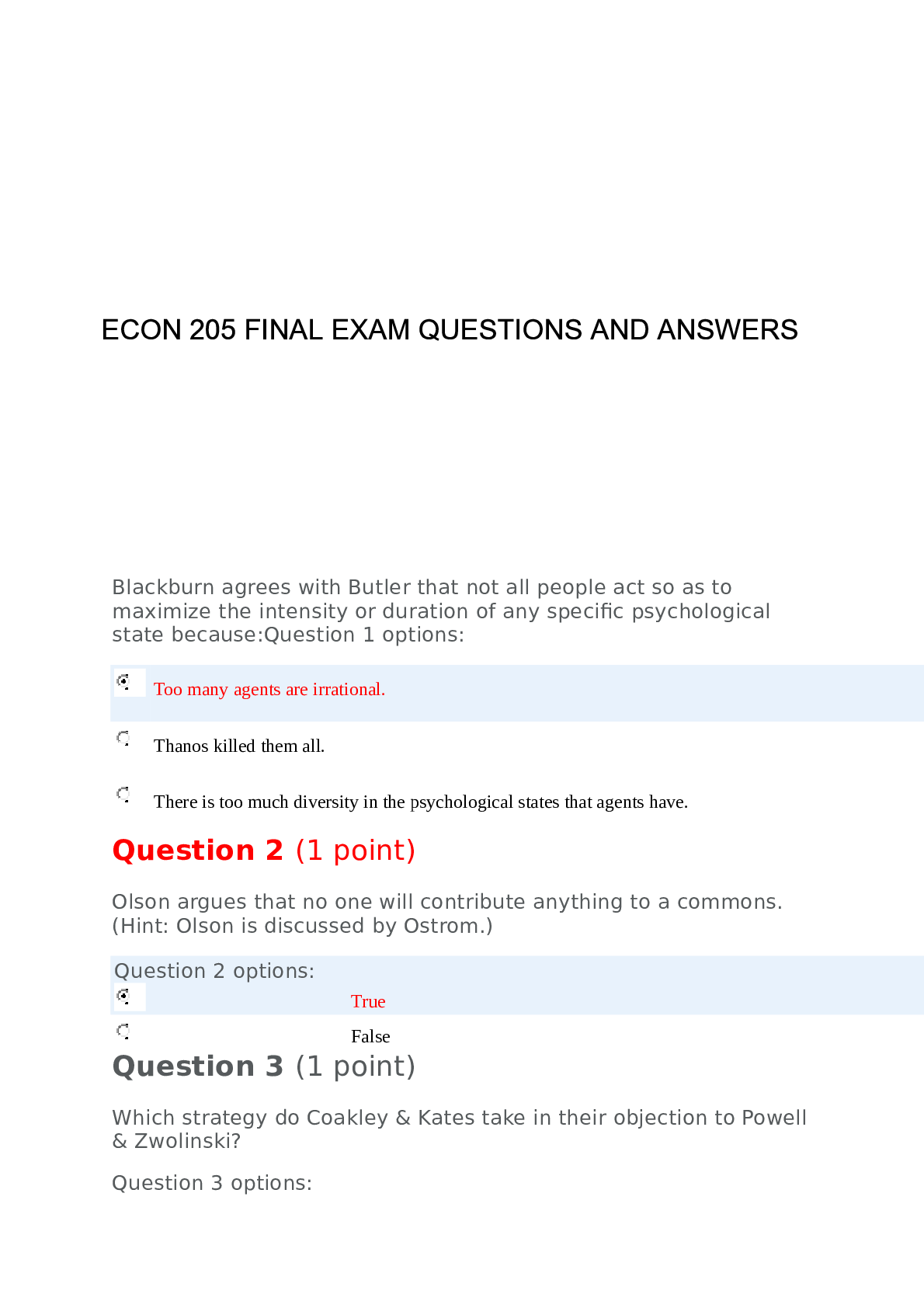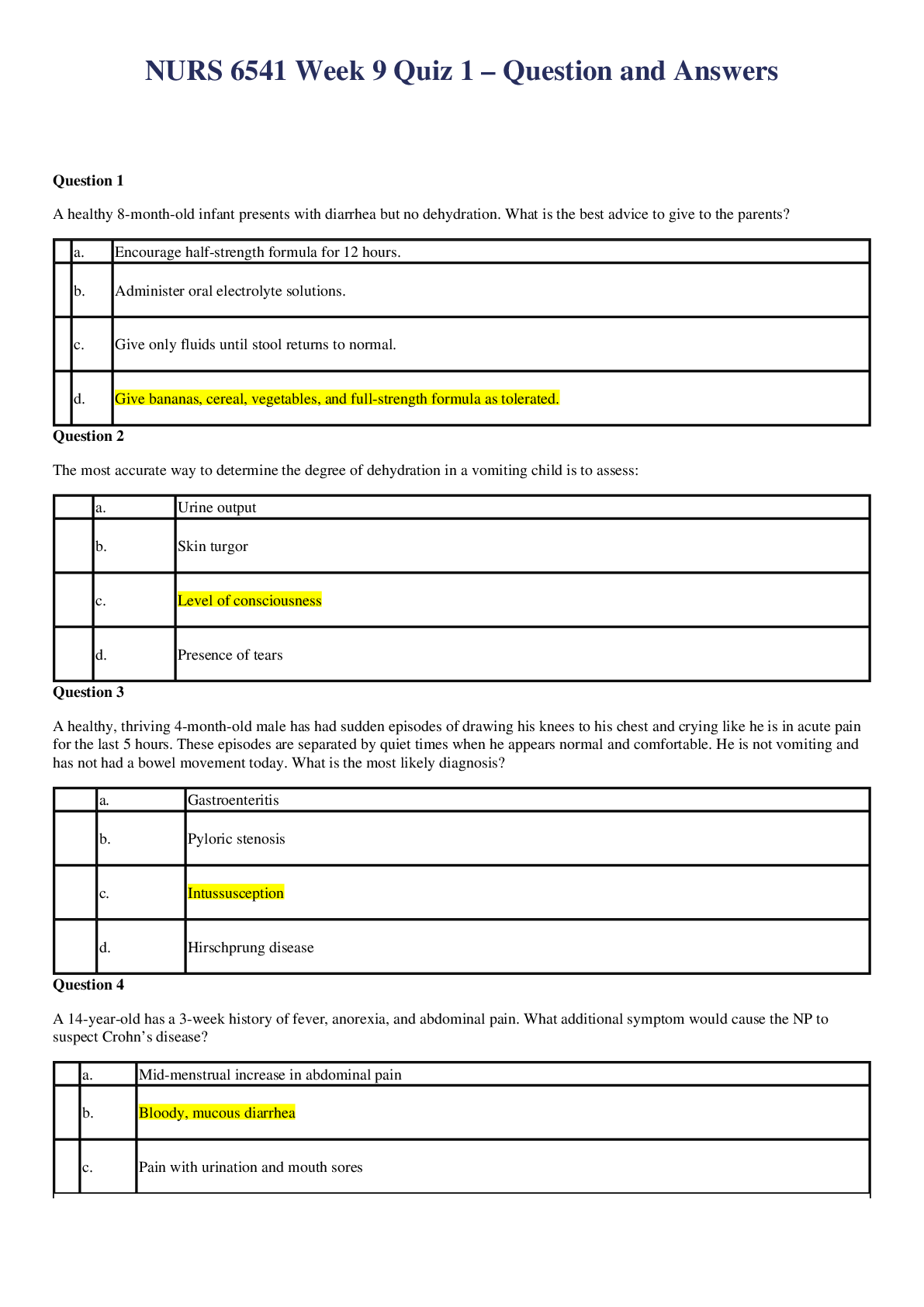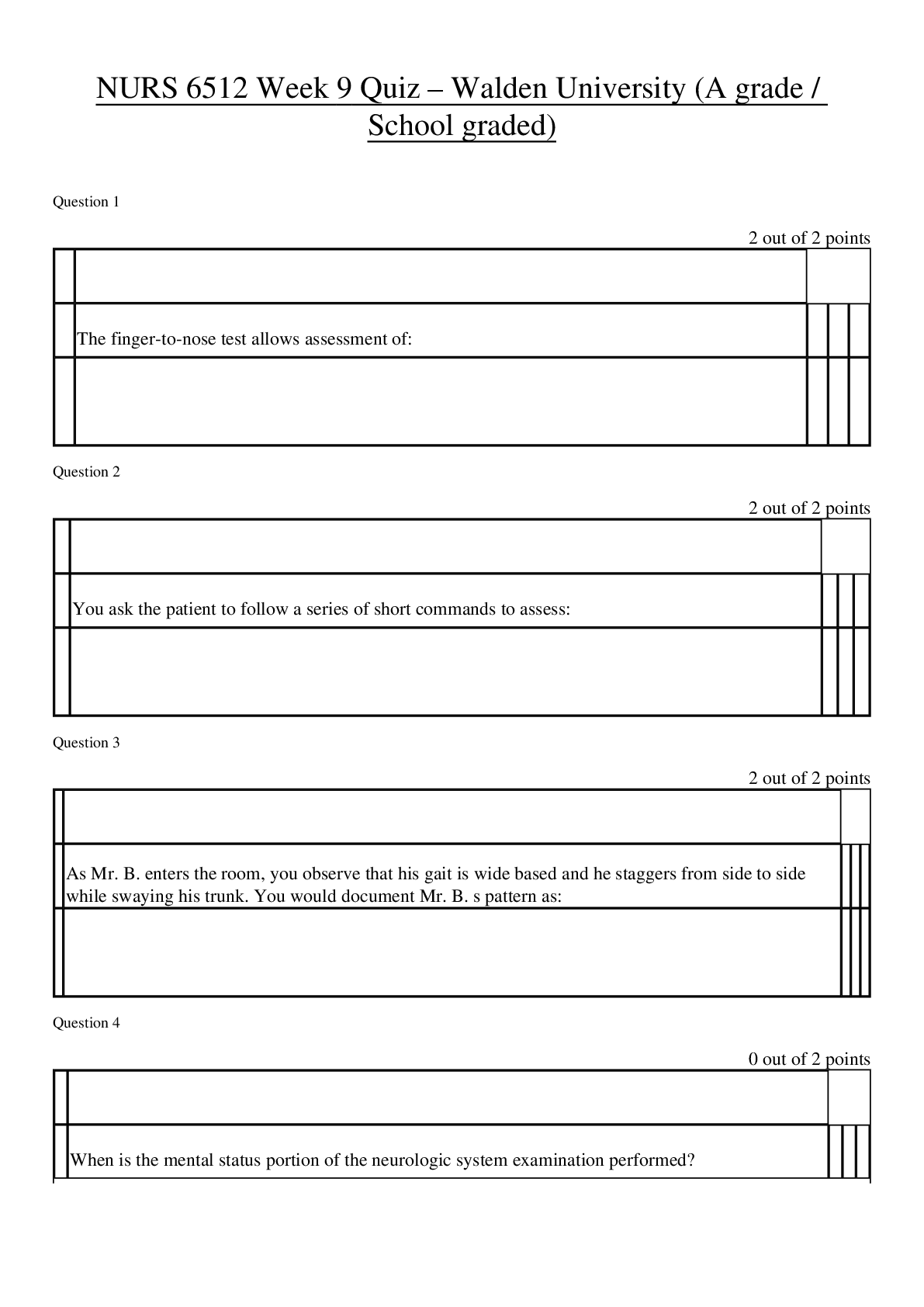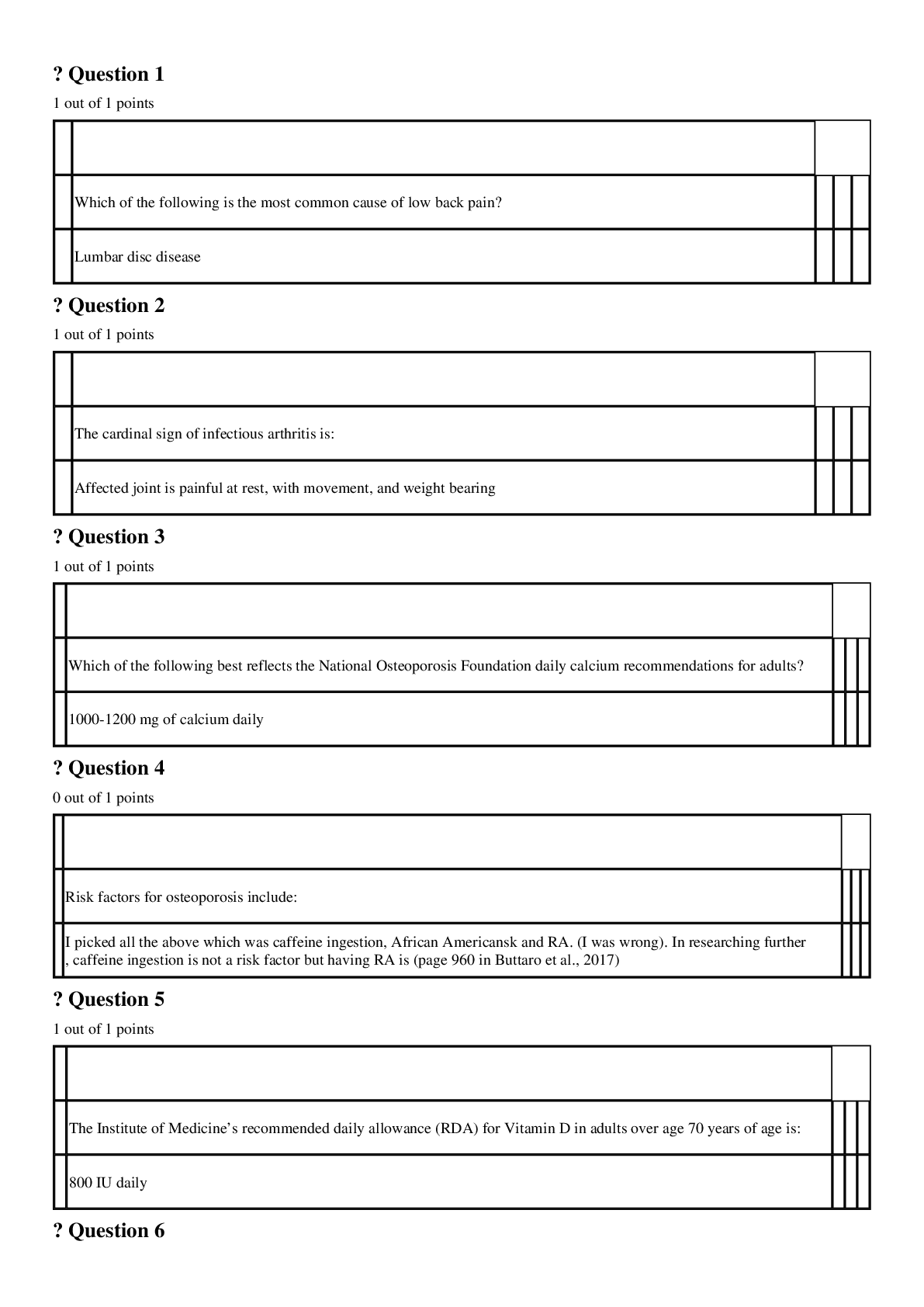NURS 6521N- 37 Advanced Pharmacology Week 9 Quiz
Document Content and Description Below
1. A nurse is administering rituximab to a patient via the IV route. The nurse will set the IV pump at 50 mg/hour for the first half hour of the initial infusion. If there are not apparent reactions... after 30 minutes of the infusion, the nurse will increase the dosage every 30 minutes by 50 mg/hour until the maximum infusion rate reaches which of the following? a. 400 mg/hr 2. A nurse has completed a medication reconciliation of a patient who has been admitted following a motor vehicle accident. Among the many drugs that the patient has received in the previous year is rituximab. The nurse would be justified in suspecting the patient may have received treatment for which of the following diseases? a. Non-Hodgkin’s lymphoma 3. A 62-year-old patient taking tamoxifen exhibits increased bone and tumor pain along with a local disease flare. The nurse interprets this as an indication of which of the following? a. A tumor responding to treatment 4. A nurse has been assigned to a female patient who is to begin chemotherapy. The nurse will initiate the prescribed oprelvekin therapy a. 6 to 24 hours after chemotherapy 5. A nurse is discussing oprelvekin therapy with a male patient. Which of the following will the nurse tell the patient is the most common adverse effect of the drug? a. Fluid retention/weight gain 6. A nurse educator who coordinates the staff education on an oncology unit is conducting an inservice on targeted therapies. What potential benefit of targeted therapies should the nurse highlight in this education session? a. Targeted therapies have the potential to damage cancerous cells while leaving normal body cells less affected. 7. A patient has completed 4 weeks of treatment with epoetin alfa. Which of the following assessment findings would most strongly indicate that treatment has been effective? a. The patient’s hemoglobin level is 11 g/dL 8. A male patient is receiving rituximab therapy for non-Hodgkin’s lymphoma. Which of the following would be a priority nursing intervention to reduce the risk for cytotoxicity and tumor lysis syndrome? a. Ensure that the patient maintains a normal fluid and electrolyte balance. 9. During ongoing assessment of a patient receiving 5-FU therapy, the nurse finds the patient’s platelet count to be 92,000 cells/mm3 . The nurse should do which of the following? a. Consult the prescriber for a decrease in dosage 10. A male patient is receiving heparin by continuous infusion. The nurse will instruct the patient and family member to report which of the following should it occur? a. A presence of blood in urine or stool [Show More]
Last updated: 2 years ago
Preview 1 out of 4 pages
.png)
Buy this document to get the full access instantly
Instant Download Access after purchase
Buy NowInstant download
We Accept:

Reviews( 0 )
$6.00
Can't find what you want? Try our AI powered Search
Document information
Connected school, study & course
About the document
Uploaded On
Sep 26, 2021
Number of pages
4
Written in
Additional information
This document has been written for:
Uploaded
Sep 26, 2021
Downloads
0
Views
55


